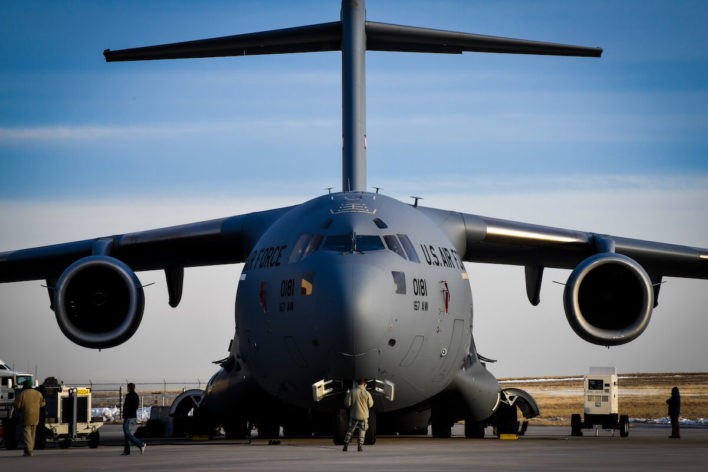Space A Travel: Everything You Need To Know

What is Space-A Travel?
Space-A is being able to travel on DOD aircraft for free or at a limited cost. The flights you take are on a space-available basis, and the number of passengers they take will depend on the flight. Space-A can get you to many different places worldwide, but some locations are more challenging to fly to than others.
When you fly Space-A, you have to do some planning and research. You must know which Space-A category you fall into and what that will mean for flights. You will need to make sure you are eligible and have all the right paperwork. You can travel with children, but you do need to be prepared for the whole trip, and that might be more difficult than flying commercially.
What Are the Different Categories for Space-A Travel?
Those who are eligible for Space-A typically fit into one of six different categories. These categories help determine how likely it is that you can fly.
Category I: Emergency Leave Unfunded Travel- For emergency situations only.
Category II: EML (Environmental Morale Leave) for Active Duty and dependents.
Category III: Active Duty Ordinary Leave- This category also includes those on Terminal Leave as well as their accompanied dependents, those on House Hunting Permissive TDY, Medal of Honor Holders, and dependents of deployed service members as long as they are deployed for 365 consecutive days or more. It is important to note that these dependents will be selected behind active duty members no matter when they sign up.
Category IV: Unaccompanied Dependents on EML or dependents whose sponsor is deployed between and including 30-364 days as well as DODDS teachers on EML during the summer.
Category V: Unaccompanied command-sponsored and non-command-sponsored dependents of active duty, permissive TDY (non-house hunting), and students.
Category VI: 100% disabled veterans. Retirees as well as their accompanied Dependents, reserve, ROTC, NUPOC, and CEC. The DoD adds, “Surviving Spouses of service members who died while on active duty, inactive duty training, or annual training status. as well as retired military members, and their accompanying dependents.”
Can Retirees Fly Space-A?
Retired military members who are issued DD Form 2 and eligible to receive retired or retainer pay may use Space-A travel according to the Air Mobility Command Space-A official site.
RELATED: Disabled Veterans Can Now Fly Space-A
Are You Able to Travel Without Your Service Member?
Only eligible dependents whose service member is stationed overseas can travel unaccompanied and would do so as CAT-V, with some CONUS restrictions. Those whose service member is deployed for 30 days or more may travel unaccompanied anywhere that Space-A is allowed at a CAT-III, after active duty, or CAT-IV, based on how long they are deployed, as mentioned above. If your spouse is not deployed and stationed in CONUS, you can not use Space-A unless you are with your service member.
What About National Guard or Reserve Members?
At press time, Space-A travel is authorized for National Guard/Reserve components/members of the Ready Reserve and members of the Standby Reserve who are on the Active Status List.
What Do You Have to Do to Get On A Flight?
The first step is get authorized to travel on Space-A. This means starting leave if you are on active duty or getting a travel letter if you are an unaccompanied dependent. If you are a retiree, you should be authorized when you are ready to start the process.
Sign-up
- Sign up and register at the locations you plan to travel to and from. You can do this at some terminals through an online form, in person, by email, or by fax. This signing up doesn’t mean you are on a flight or have an exact flight time. What you will be doing is getting assigned a date and time. This will put you in front of anyone in your category who has a later date and/or time than you do.
- Sign up as soon as possible for as many places as you think you might go. If you are unsure where you will be flying from, sign-up for all potential places. You don’t want to sign-up too far in advance so that your sign-up expires before the date you want to fly. For active duty, you should sign-up as soon as your leave starts, and that sign-up should last until your leave is over. For non-active duty, sign-ups are valid for 60 days.
- Each sign-up location is independent. Call to verify that you are signed up and carry a printed copy of your emails verifying you have done so. That way, you can show that you should be on any list you need to use to travel.
Showing Up for a Flight
- Show up before any potential flight you want to take. Flights will get posted, and you can make your plan from there. You need to mark yourself “Present” for the flight you want to go on. This tells the terminal that you are there and will be ready to fly when the time comes.
- When exactly you are marked “Present” doesn’t matter as far as where you are in line; the date and time of when you signed up does, but you would need to be marked present within 24 hours of flight time.
- It is a good idea to get to the terminal, ready to fly with all of your bags and paperwork, about an hour before what is called “Show Time.” You would then mark yourself “Present” by checking in at the desk and wait until “Show Time.” At this point, you do not want to leave the area, even to grab a bite to eat. Times can change, and you want to be ready if that happens.
Show Time and Roll Call
- “Show Time” is when “Roll Call” can begin, and it is about 2-3 hours before it would be time to fly. You need to be aware of when “Show Time” is supposed to start, as well as what time you would fly if you make it on the flight. Always give yourself extra time.
- “Roll Call” is going to be when the date and time you “signed up” for that location and the category you are in come into play. With “Roll Call,” they start with CAT-I and go through all the way until CAT-VI or until they fill all the seats. For example, someone in CAT-IV, who signed up on June 1st at 10:30 am will be ahead of someone who signed up for CAT-IV, on June 1st, at 11:30 am. All of CAT-IV would be ahead of all of CAT-5. They might just have 10 seats, or they might have 50 seats, it depends on the flight, aircraft, and how much space they actually have on the flight.
- You will need to be right there during “Roll Call.” If you are somewhere else, and they call your name, and you don’t check-in, you will not make it on the flight. You will need to be travel-ready when this happens.
Manifested
- Being “Manifested” means you are selected for a flight, and you will be going on this flight unless the flight itself is canceled or you get bumped for cargo. This is where you want to be.
- You can also be “Manifested Through,” which means you won’t have to compete for a seat on your second flight. However, you need to make sure you are “Manifested Through” to your end location. This, however, does not mean you have your round trip covered. You will have to compete for seats on your return trip.
How Much Does Space-A Travel Cost?
Many Space-A flights are free; however, if you take a Patriot Express flight, you may be charged a head tax and inspection fees. Bring cash for this flight, you may not be permitted to pay using a credit card.
You may also need to have extra money for possible stays in hotels, extra food, or even money for transportation. Because some flights get canceled, or it can be hard to get on right away, you might have to wait near the terminal for a few nights.
How Many Bags Can You Bring?
For Space-A, the nature of the mission determines how much baggage can be loaded. On some flights, you may be allowed to bring two pieces of luggage each, not to exceed 70 lbs. For others, there may be a requirement for the bags to be under 30 lbs.
Where Can You Go For Extra Help?
- The Air Mobility Command website– This is where you can read information about how Space-A works, sign up for flights, and more.
- SpaceA.net– An informational site about the ins and outs of Space-A travel.
Other Tips For Flying Space-A?
The main thing you need to remember is that Space-A is going to require some planning. You will need to spend some time researching where you will go, how many flights they have, and how easy it might be for you to get on a flight. Certain times of the year are busier than others, and you must bring your patience.
Flights can get delayed for days. You might go through the entire process and end up on a flight, only to have to get off and start all over again because there is something going on with the plane. You need to plan for if your first idea doesn’t work out.
There are a lot of benefits to flying Space-A. You can see the world and can do so without having to spend a lot of money, but you have to understand that you will have to work for it. Some flights will be easier than others, and you just never really know what you will find when you attempt to fly Space-A.
If you need to reach your destination by a certain date, Space-A might not be the best way to get there. Unlike a commercial airline, you are not guaranteed a time and a place to fly. Being flexible and understanding is a must. If you can go into Space-A with that mindset, you can enjoy everything Space-A has to offer.
RELATED:
- Airlines with Military Discounts
- Disabled Veterans Can Now Fly Space-A
- Delta Airlines Military Discount
- Summer Travel Discounts for Military Families
- Best Vacations for Military Families in the US
- Hotels with Military Discounts


